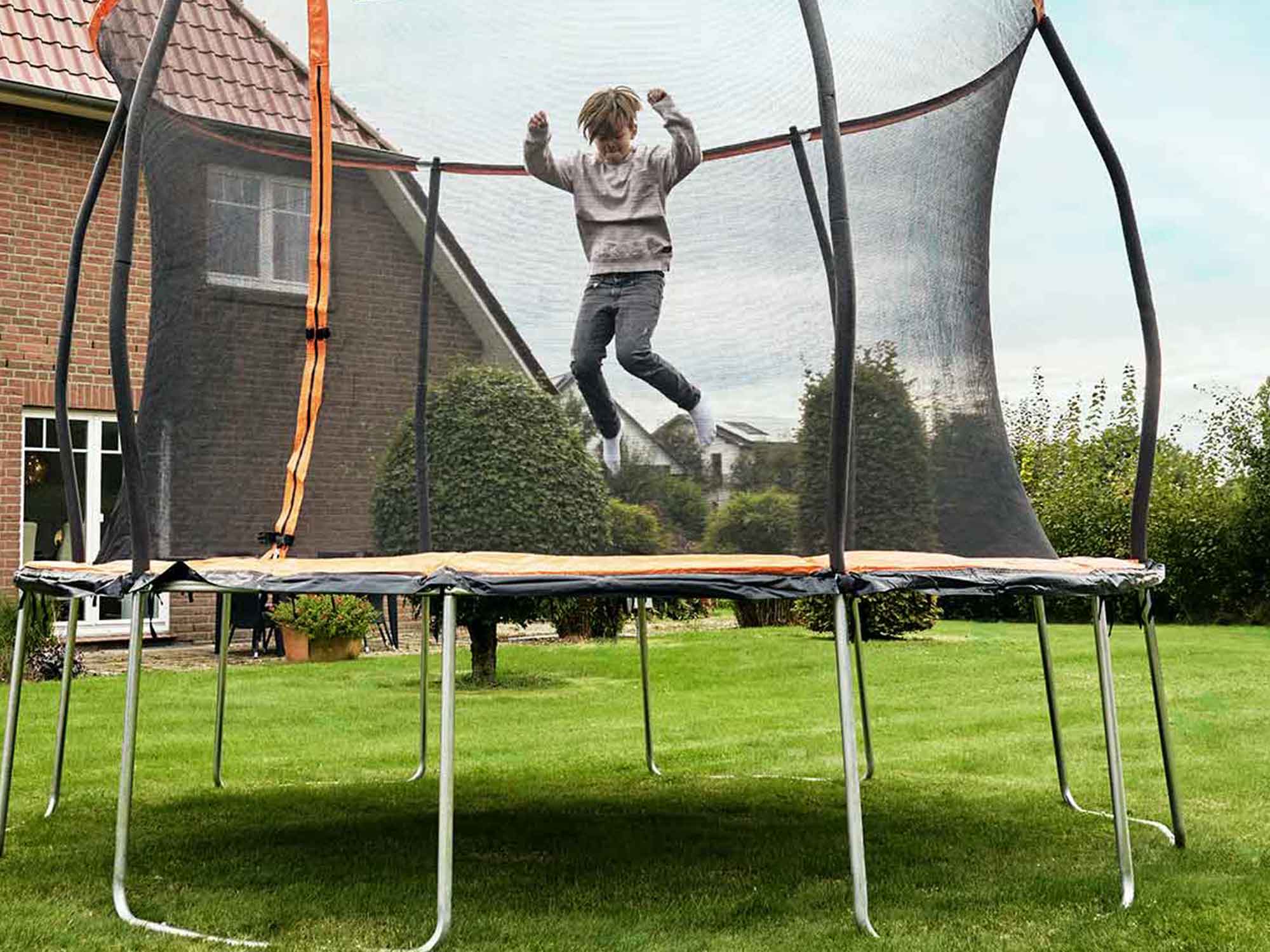If you go for a run every now and then, you may have set yourself smaller goals. Maybe you already do it regularly and feel your fitness improving from week to week.
At some point it will be time to tackle the first big goal.
Do 10 kilometers
The 10 kilometer mark. Not everyone can manage to run such a distance in one go. That's why we've developed a 12-week plan to slowly get you up to this distance.
Before you start...
If you have no experience with running or have not done any sport in general, you should at least have a check-up with a doctor when you are around 35 years old.
In general, you also have to listen to your body. There's no point in overexerting yourself just to follow through with the plan. If you need an extra day of break, just postpone everything a bit.
You should also get the following equipment :
- well-cushioned, neutral running shoe
- comfortable clothing: shirt, pants, socks, sports bra, etc.
- a way to measure time (e.g. a cell phone or a watch)
It is also important that you have drunk enough before training and have a small amount of energy to fall back on. A portion of pasta before running doesn't weigh heavily on your stomach and ensures that hunger doesn't stop you. To be on the safe side, take a small snack (e.g. an energy bar) with you.
Tip: To check the time, your pulse and the distance, we recommend an activity tracker. With this training plan, speed is not important. It's just a matter of running for a certain amount of time. Then the training progress will come on its own.
The training plan for your 10 kilometers
Before each workout you should warm up briefly. For example, you can dance in place for a few minutes. This gets your circulation going and ensures that your body can fully reach operating temperature.
By the way : Of course you don't have to stick to the days of the week. However, the rest days between longer endurance runs should definitely be taken into account.
The following training elements appear again and again in the training plan:
- slow continuous running: Here you choose a pace that you feel comfortable with and that is not too fast. The important thing is that you can hold on the entire time.
- Walking break: You can take a breather and recharge your batteries. At the beginning you will be allowed to take breathers more often (see plan).
- Progression runs: For progression runs you should run a distance of around 80 to 100 meters several times in a row. You progress from a light trot (1st increase) to a full sprint (last increase).
As you will see, the initial plan is to run three runs per week. Later the workload increases to four runs per week. If you can't find the time for this, delete the shortest or easiest run from the program. However, you shouldn't try to make up for the missed runs the following week.
What to do in bad weather?
If bad weather is forecast, you have two options: you grit your teeth and complete the program anyway, or you switch to an indoor alternative.
Our SportPlus treadmills provide you with perfect training conditions at all times and you don't even have to leave the house. The foldable devices in particular are practical because you can easily store them away.
The first few weeks as a foretaste
week 1
| weekday | Training session |
|---|---|
| Monday | 3 x 10 minute runs (with a 1.5 minute walking break each time) |
| Tuesday | regeneration |
| Wednesday |
20 minutes continuous run (slow) |
| Thursday | regeneration |
| Friday | regeneration |
| Saturday | 3 x 10 minute runs (with a 1.5 minute walking break each time) |
| Sunday | regeneration |
Week 2
| weekday | Training session |
|---|---|
| Monday | 2 x 15 minute runs (with a 1.5 minute walking break each time) |
| Tuesday | regeneration |
| Wednesday |
20 minutes continuous run (slow) |
| Thursday | regeneration |
| Friday | regeneration |
| Saturday | 2 x 15 minute runs (with a 1.5 minute walking break each time) |
| Sunday | regeneration |
Complete download
10 kilometers in under 50 minutes
When you run, you're usually competing against yourself - or, of course, against the clock! A recognized reference mark among ambitious runners is the 5-minute pace. This refers to a running speed at which 1 kilometer is covered in 5 minutes.
If you regularly do running training and have perhaps already completed our 10 kilometer training plan, here is the next challenge for you: running 10 kilometers in under 50 minutes.
Our 12-week plan prepares you for this special challenge by specifically working on your endurance and speed. Unlike the 10-kilometer training plan or the marathon training plan, it's not just about getting to the finish line. You also have to be able to maintain a certain pace.
Before you start...
If the pace and time are not an issue, you can take a more relaxed approach to training. However, this training plan depends on your running speed and puts more strain on your body. Therefore you need the right equipment:
- well-cushioned, neutral running shoe
- comfortable clothing: shirt, pants, socks, sports bra, etc.
- Sports watch (e.g. SportPlus Activity Tracker) to check pace, pulse & time
It is also important that you always listen to your body. Don't overexert yourself and take an extra day off. The goal of running 10 kilometers in under 50 minutes is very ambitious. If you need an extra week or two to complete the plan, that's totally okay.
10 kilometers in under 50 minutes - the training plan
Before each training session, you should warm up and run in briefly. To do this, first dance in place for a few minutes and then start to walk slowly. This gets your circulation going and brings your muscles up to operating temperature.
By the way : The days of the week in the plan are only examples. However, you should at least keep the rest days as shown. Otherwise you will end up lacking regeneration.
You will find the following training elements in the plan:
- slow continuous running: Choose a pace that you can complete for the specified duration. This continuous training is intended to improve your basic endurance.
- Moderate endurance run: Here, too, you shouldn't run too fast, but you should feel like you're moving fairly quickly.
- Increased runs: Find a distance of 80 to 100 meters that you run several times. When running, you progress from a light trot (first increase) to a full sprint (final increase).
- Interval training : This involves alternating fast and slow passages. With interval training you push yourself to your limits.
Our plan starts with 3 sessions per week. However, from the second week onwards there will be 4 units per week. If you don't have enough time, you can delete the “easiest” run from the program. Don't catch up on runs in the next week. This has a negative effect on regeneration.
What to do in bad weather?
If the weather is bad, you can either grit your teeth and stick to the training plan or look for a suitable dry alternative.
With our SportPlus treadmills you have excellent training conditions at home at any time and can optimally dose your training. The foldable devices are particularly practical because they can be easily stowed away.
The first few weeks as a foretaste
week 1
| weekday | Training session |
|---|---|
| Monday | regeneration |
| Tuesday | regeneration |
| Wednesday |
Run in for 15 minutes 6 x 800m in 3:45 400 m in between, easy trotting (LT) Run out for 15 minutes |
| Thursday | regeneration |
| Friday | 80 minutes of slow continuous running |
| Saturday | regeneration |
| Sunday | 50 minutes of moderate continuous running |
Week 2
| weekday | Training session |
|---|---|
| Monday | 40 minutes of moderate continuous running |
| Tuesday | regeneration |
| Wednesday |
Run in for 15 minutes 3 x 1600 m in 7:30 LT: 600 m each Run out for 15 minutes |
| Thursday | regeneration |
| Friday | 50 minutes of moderate continuous running |
| Saturday | regeneration |
| Sunday |
80 minutes of slow continuous running then: 3 progression runs |
The marathon is the absolute supreme discipline in running. The distance to be conquered is 42.195 kilometers. Anyone who crosses the finish line is filled with a real feeling of happiness and can simply be proud of themselves.
When it comes to your marathon debut, it doesn't matter how fast you are. First of all, your goal is just to arrive and overcome the long distance. We prepare you for this with our 6-month plan.
Before you start...
During your first marathon and during the preparation, you will sometimes run for several hours at a time. For this you need the right equipment:
- Well- cushioned running shoe for long distances
- comfortable clothing: shirt, pants, socks, sports bra, etc.
- Sports watch (e.g. activity tracker) to keep an eye on the distance traveled, the time and your pulse
Also, please always listen to your body. If you don't feel so fit for a day, it's better to stop training and take a few days to regenerate. Our 6-month plan is designed for the long term and one training session is more or less irrelevant.
Of course, you still need a bit of stamina. Just because it gets strenuous, you shouldn't immediately shorten your training. A marathon like this doesn't run itself. But if you stay disciplined, you will definitely make it to the finish line.
Arriving at the marathon - the training plan
In general, you should do a short warm-up before every training session. It's a good idea to dance on the spot to warm up your muscles and get your circulation going a little.
You will find the following training elements in the plan:
- slow continuous running: During a slow endurance run you move at a very comfortable pace. If someone is walking next to you, you can still have a casual conversation with them.
- Moderate endurance run: Here the pace is slightly increased, but you have no problems running the required distance or time.
- Interval training: During interval training, fast and slow phases alternate. This increases your basic endurance and at the same time improves your performance under high stress.
Our plan is for you to train around 3-4 times a week. We will tell you how much training you should do each month. You can then decide for yourself how you distribute the units over the month. But also make sure you get enough rest!
Of course, you can't start running for several hours straight from a standing start. Therefore, the first two months focus on your basic endurance. Only then do we slowly approach the competition time and distance.
What to do in bad weather?
The fact that you will have excellent training conditions for 6 months to prepare for your marathon is utopian. If the weather is bad, you can either continue with your program or switch to an indoor version that is independent of the weather.
The first months as a foretaste
Month 1
| Training form | Scope of training |
|---|---|
| slow continuous running | 10 x 40 minutes |
| moderate endurance running | 6 x 30 minutes |
| Interval training |
1 x 5km |
Month 2
| Training form | Scope of training |
|---|---|
| slow continuous running | 3 x 40 minutes 7 x 50 minutes |
| moderate endurance running | 3 x 30 minutes 3 x 40 minutes |
| Interval training |
1 x 10 km |



